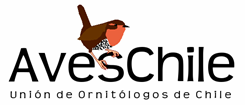
Guacamayo escarlata momificado encontrado en Pica, Chile
Calogero Santoro, Universidad de Tarapacá y José Capriles, Penn State
Un oasis en el desierto de Atacama en Chile puede haber servido alguna vez como centro para el comercio de loros vivos de los Andes.
An analysis of the remains of whole birds and feathers found at an archaeological site in Pica, Chile, and other sites in the Atacama desert has revealed that llama caravanners transported live birds more than 500 kilometres in some cases. This occurred between AD 1100 and 1450, after the fall of the Tiwanaku, an Andean civilisation that held power for centuries, and before the rise of the Inca.
The researchers then analysed the feathers, and in some cases the remains of whole birds, found at the sites, including some buried with caravanners at a cemetery at an oasis in Pica. A study of carbon and nitrogen isotopes in the remains revealed that the birds lived for some time in the Atacama desert. The isotopes revealed that they had been fed on maize that was likely to have been cultivated with the guano of seabirds transported from the coast – food that wouldn’t have existed in their native ranges.
They were probably kept not only as pets that represented an exotic status symbol, but as potential money makers, says Capriles, “kind of like the hen that produces golden eggs”.
Live birds produce feathers that could have been sold – archaeologists know these were used in clothing, headdresses and hats. Some of the well-preserved birds show evidence of frequent plucking.
Capriles says the study provides further evidence that caravan routes were intact during this period of small regional powers, in between larger powers like the Inca and Tiwanaku.
